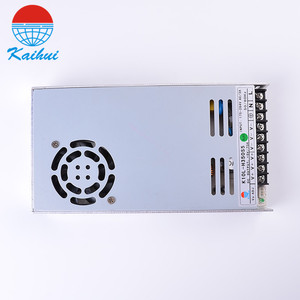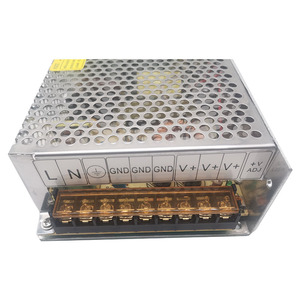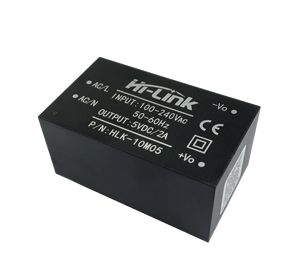(11233 products available)























































































































































































































A single light source is a lighting unit that provides illumination through one distinct point, which can be a bulb, LED panel, or other forms. It is a common choice for various applications, from residential to commercial and industrial spaces. This includes sources such as track lights, recessed lights, pendant lights, and table lamps.
Single light sources are popular in minimalist designs. They are also widely used where more compact lighting is required—examples of applications of single light sources in homes and offices. Single light sources are widely used in homes, offices, and outdoor settings. Here are some types of single light sources:
LED Bulbs:
LED bulbs are lighting devices that use light-emitting diodes to produce light. They are popular for their energy efficiency and long lifespan. They are widely used in residential, commercial, and industrial applications. LED bulbs are available in different shapes and sizes, such as A19, BR30, and PAR38. They can be incandescent or fluorescent.
Fluorescent Tubes:
These tubes are a type of fluorescent light that consists a long tube-shaped container filled with low-pressure mercury vapor. They are popular for their even light distribution and are commonly used in offices, schools, and hospitals. Fluorescent tubes come in various lengths and diameters, with T8 and T5 being the most common. They are available in different color temperatures.
Halogen Bulbs:
Halogen bulbs are a type of incandescent light. They use halogen gas, such as iodine or bromine, to produce light. These bulbs are known for their bright, white light and are commonly used in vehicle headlights, outdoor lighting, and some indoor fixtures. They have a longer lifespan than traditional incandescent bulbs. They are available in a variety of wattages.
Compact Fluorescent Lamps (CFLs):
CFLs are a type of fluorescent light. They are designed to fit into standard incandescent sockets. These bulbs are popular for their energy efficiency and relatively long lifespan. They are commonly used in residential and commercial lighting. CFLs are available in spiral and bullet shapes.
Single-Point LEDs:
Single-point LEDs are lighting devices that use a single light-emitting diode to produce light. They are known for their energy efficiency, long lifespan, and versatility. Single-point LEDs are commonly used in flashlights, headlamps, and some types of pendant lighting. They are small, durable, and available in various colors.
Incandescent Bulbs:
These are traditional light bulbs. They produce light by heating a thin wire filament of tungsten until it glows. Incandescent bulbs are known for their warm, pleasant light and are commonly used in residential lighting. They have a shorter lifespan and lower energy efficiency.
A single light source has different features and functions across various applications. Here are some of them:
Lighting Consistency
Single light sources can provide consistent lighting. This is beneficial in applications like photography and videography. Consistent lighting improves visibility and reduces shadows and glare. This leads to accurate color representation and detail in pictures and videos.
Uniformity of Illuminance
A single light source provides a uniform distribution of light. This is important in architectural lighting and artwork. Uniform illuminance highlights features and reduces hotspots. This makes the space or object more visually appealing.
Shadow Control
Single light sources create shadows. The shadows can be controlled for dimensionality and depth in art and design. The light source's distance, direction, and size affect the shadow's characteristics. This can be manipulated to achieve the desired effect.
Highlighting
Single point sources can be used to emphasize specific objects or areas. This is done by creating a contrast between the illuminated and the surrounding areas. This technique is used in landscape lighting and museum displays.
Color Temperature
Single light sources can have different color temperatures. For example, they can be warm or cool. The color temperature affects the mood and ambiance of a space. Warm temperatures are inviting, and cool temperatures are energizing.
Directional Lighting
Single light sources are directional. These include spotlights and flashlights. The directional lighting is used for tasks that require focused illumination. For example, in reading or working on intricate details.
Energy Efficiency
single light sources such as LED lights are energy-efficient. This leads to lower energy consumption and costs. Energy-efficient lighting solutions are environmentally friendly. They also meet the regulations of energy efficiency.
Portability
Some single light sources are portable. For example, battery-operated lanterns or headlamps. These can be used in remote areas or during power outages.
There are several applications and industries where a single light source is used. This includes;
Photography
In photography, a single light source is used to create a dramatic effect. This allows the photographer to focus on capturing the subject's details. Single lighting techniques are also used in portrait photography to minimize shadows and highlights. This ensures that the facial features are well defined. Additionally, in food photography, a single light source is used to create appealing images that enhance the visual appetizing of the food.
Stage Lighting
A single light source is often used in theater and performance settings. This is to create focus and emphasis on specific actors or areas of the stage. This allows for the creation of a dramatic ambiance and mood. A single light source is also used in concert settings to draw the audience’s attention to specific performers or instruments.
Scientific Applications
Single light sources are used in scientific applications, for instance, in microscopy. This is to illuminate samples for detailed observation and analysis. Additionally, in optical experiments, a single light source is used to ensure consistency and accuracy in measurements.
Visual Arts
In visual arts, a single light source is used to create depth, dimension and focus on specific areas of an artwork. This is through controlled shadows and highlights. Additionally, artists use a single light source to study the effects of lighting on objects and to create realistic representations in their work.
Interior Design
A single light source is used in interior designs to create an atmosphere and highlight specific features or areas within a space. This is through the strategic placement of light fixtures such as pendant lights, sconces or spotlights. This leads to the creation of focal points and the enhancement of architectural elements.
When looking for a single light source, there are several factors to consider to ensure a successful purchase. Here are some of them:
Consider the type of light fixture
There are several types of light fixtures available, and it is important to choose the appropriate one for the intended space. A recessed LED lighting supplier usually provides can lights that are installed into a hollow opening in the ceiling. These lights provide a clean, unobtrusive look and are great for illuminating a room. Pendant lights hang from the ceiling and are available in various styles, suitable for spaces like dining areas and kitchens. Chandeliers are decorative and use multiple bulbs. They are mostly used in formal settings. Track lights are flexible and consist of multiple fixtures on a track. They can be customized to direct light where needed.
Energy efficiency
When choosing an energy-efficient single light source, buyers should consider LED lights. LED lights have high energy efficiency and a longer lifespan than other bulbs. They consume less power and convert energy to light more efficiently. Additionally, they have a longer replacement period, which is more convenient and saves on maintenance costs.
Brightness and color temperature
The intended use of the space will help determine the appropriate brightness and color temperature. A single light source for a bedroom or living room should be warm and soft. On the other hand, a kitchen or office area requires bright light. The light source's Kelvin rating indicates its color temperature. A lower Kelvin rating indicates a warmer light, while a higher rating shows a cooler light.
Height and size
The size of the light fixture should be proportional to the room's dimensions. If the room is small, a small fixture will be sufficient to light the area. On the other hand, a large room needs a bigger fixture to illuminate it adequately. Additionally, if the light is hanging from the ceiling, the height should be considered. For instance, in a dining area, the light should hang a few feet above the table. It should not be too low so it doesn't obstruct the view or too high that it fails to provide adequate light.
Q1: What are the benefits of a single light source in lighting design?
A1: The advantages of a single light source include improved depth and texture, reduced shadows, and a more focused and dramatic illumination. It can also enhance the color rendering of objects and create a warm and inviting atmosphere.
Q2: What are the drawbacks of using a single light source?
A2: Potential drawbacks of using a single light source include the creation of harsh shadows, uneven lighting, and the potential for glare. It may also lead to a lack of dimension and depth in the illumination.
Q3: How can the drawbacks of a single light source be overcome?
A3: The disadvantages of a single light source can be minimized by using lighting accessories like diffusers and reflectors to soften and distribute the light. Combining the light source with other sources and adjusting the placement and angles can also help achieve a more balanced and pleasing illumination.
Q4: Can a single light source be used for outdoor lighting?
A4: Yes, a single light source can be used for outdoor lighting. For example, using a single source of light in outdoor areas can effectively illuminate pathways, gardens, and patios. However, it is important to consider factors such as the direction of the light, potential glare, and the need for dimming or switching options to cater to different lighting requirements.
Q5: What are some tips for creating a single light source setup?
A5: Some tips for creating a single light source setup include experimenting with different positions and angles of the light, using modifiers such as dimmers, diffusers, and reflectors to control and shape the light, and considering the texture and color of the surfaces that will be illuminated. It is also important to test and adjust the setup to achieve the desired effect.
The web search volume for the keyword "single light source" in the electrical equipment and supplies category shows an average monthly web search volume of 30, with a significant 50% increase over the last three months. Notably, there has been no change in the yearly web search volume, maintaining a stable interest over the past 12 months.
Analyzing the detailed monthly data, the web search volume for "single light source" remained consistent at 30 web searches from December 2023 to May 2024, except for a spike in April 2024 to 40 web searches. Following this peak, the web search volume gradually decreased to a low of 10 web searches in July and August 2024, before rising back to 20 and 40 web searches in subsequent months. This pattern indicates a seasonal variation, with peaks in April and a noticeable dip during the summer months.
The fluctuations in web search volume for "single light source" suggest a pattern that could be influenced by seasonal lighting needs or market trends within the electrical equipment and supplies sector. The initial stability followed by a sharp increase and subsequent decline could be attributed to specific events or changes in consumer behavior, though the underlying reasons for these trends require further investigation.